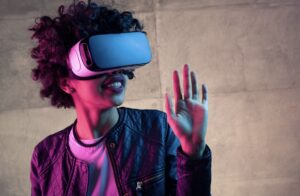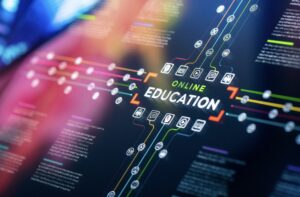The Impact of Technology Trends on Student Learning
Moving on to understanding how these advancements are influencing students’ learning, let’s delve deeper into this intriguing aspect.
Improved Access to Resources – Technology serves as a beneficial conduit in amplifying the accessibility to educational resources for students. Applications, online libraries, and educational platforms open up boundless learning opportunities for students. Even those in remote areas have a chance to tap into resources previously available only to those in urban and central regions. MIT’s OpenCourseWare (OCW), for example, offers free access to nearly all course content from the prestigious institution.

This global reach enriches students’ knowledge base, amplifying their access to high-quality learning materials without geographical constraints.
Personalized Learning Experiences – Furthermore, technology trends like artificial intelligence and adaptive learning systems offer personalized learning experiences. These systems tailor education to individual learning styles and paces, ensuring students grasp concepts at their comfort level. For instance, platforms like Khan Academy provide personalized dashboards that adapt based on a student’s performance and skill mastery.
Adaptive learning systems offer a more engaged and personalized learning experience, fostering improved educational outcomes. This tech trend allows education to shift from a one-size-fits-all approach to an individualistic, learner-centric model.
Technology Trends in Education Play a Key Role in a Student’s
In the sphere of education, technological advances continue to pave the way for enhanced learning experiences. This section hones in on three powerful technologies transforming modern education – Artificial Intelligence, Virtual and Augmented Reality, and Blockchain.
Artificial Intelligence and Machine Learning
Artificial Intelligence (AI), coupled with Machine Learning (ML), transcends traditional practices, providing students with personalized learning experiences. AI-driven systems analyze student behavior and performance, adapting content to suit individual learning needs. For example, educational institutes utilize AI to monitor student engagement levels and provide real-time feedback, guiding students toward improved performance. ML algorithms, on the other hand, by studying patterns in student behavior, predict learning outcomes and offer ways to enhance student success rates.
Virtual and Augmented Reality

Virtual Reality (VR) and Augmented Reality (AR) are adding a new dimension to learning; the immersion factor. Shifting from passive to immersive learning enables students to interact with the subject matter, increasing comprehension and retention rates.
Imagine studying historical events by virtually walking through them or learning about complex physics theories through interactive AR simulations. Such authentic, immersive experiences transform traditional education, making learning fun, engaging, and effective for students.
Blockchain Technology and Security
The integration of Blockchain technology into the educational framework is an emerging trend, with significant implications for security and verification processes. The blockchain, by design, is a transparent, tamper-proof database that records transactions. Institutions now utilize Blockchain platforms for storage and verification of academic credentials, eliminating fraud, reducing administrative workload, and ensuring student data privacy. For instance, institutions are adopting blockchain to issue digital diplomas, enabling easy verification of academic credentials for employers and universities.
Benefits of Technology Integration in Education
This section delves into additional advantages of incorporating technology into educational settings, emphasizing its capacity to boost collaboration and communication and accommodate diverse learning needs.
Enhancing Collaboration and Communication
Technology fosters collaboration and communication among students, crucial elements of successful learning. Commonly employed tools like Google Suite pave the way for real-time collaborations on projects, even if participants are geographically distant.

For instance, Google Docs lets multiple users edit the same document simultaneously, expediting work and encouraging a sense of teamwork. Similarly, virtual meeting platforms like Zoom facilitate learning discussions and productive debates, blurring the lines of traditional classroom boundaries.
Another advantage lies in the use of discussion forums and social networking sites, which invite participants to express ideas and thoughts freely. This active participation contributes to comprehensive learning. For instance, platforms such as Edmodo connect teachers and students outside classroom hours, nurturing a dynamic, interactive learning community.
Supporting Diverse Learning Needs
Technology opens doors to offer personalized learning experiences, catering to varied learning needs and styles. Adaptive learning software, powered by AI, taps into individual learning paces and styles to create custom lesson plans. For instance, tools like DreamBox Learning offer math lessons that adjust to students’ pace, ensuring that no one is left behind.
Furthermore, assistive technology aids students with special needs. Text-to-speech tools, screen readers, and clickers assist learners with difficulties in traditional learning modes. As an example, Kurzweil 3000 software benefits dyslexic students by converting text to speech, reinforcing understanding through auditory means.
These technology-based pedagogical approaches create inclusive learning environments, ensuring no student is left behind, regardless of their learning needs or abilities.

